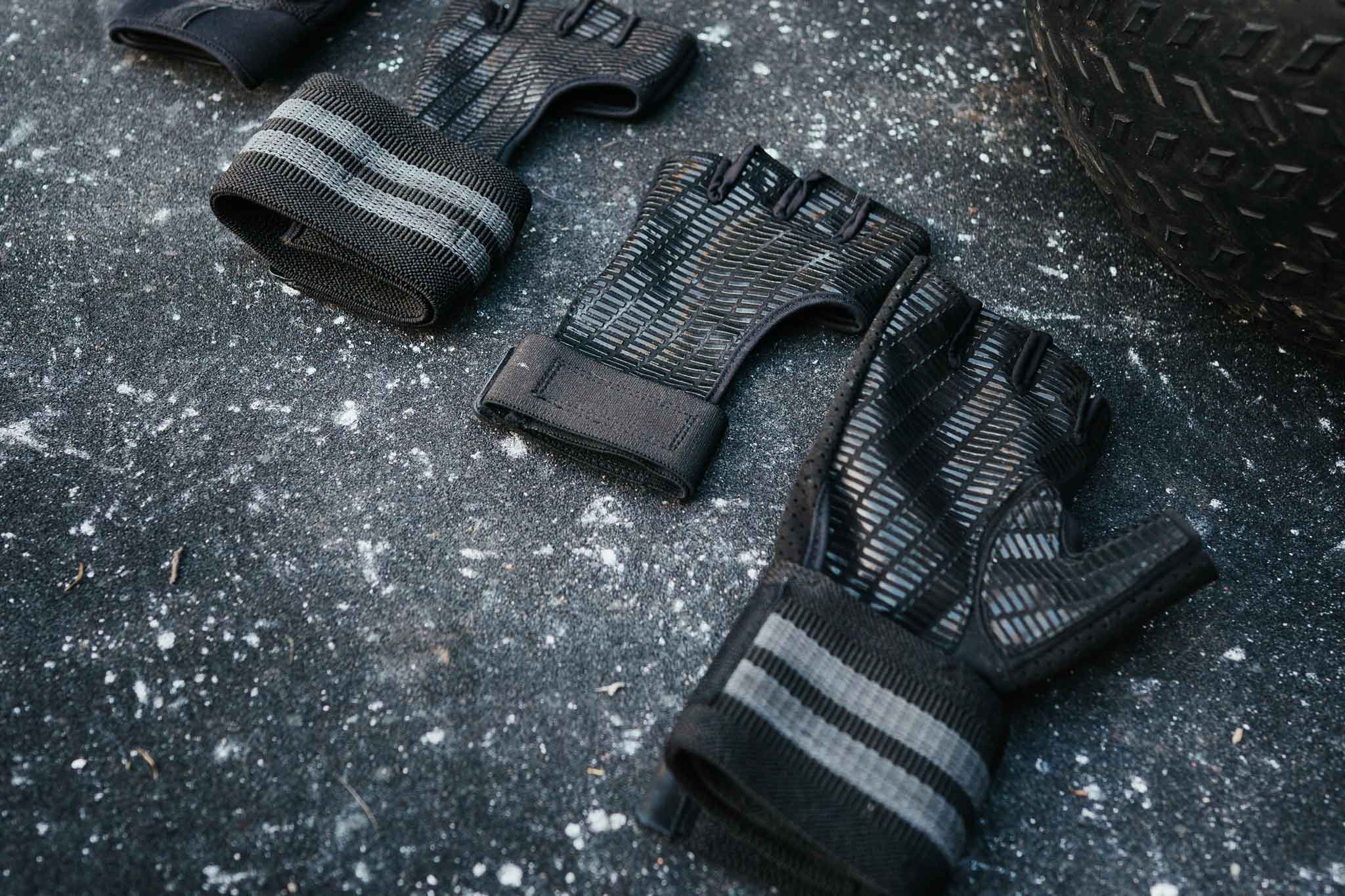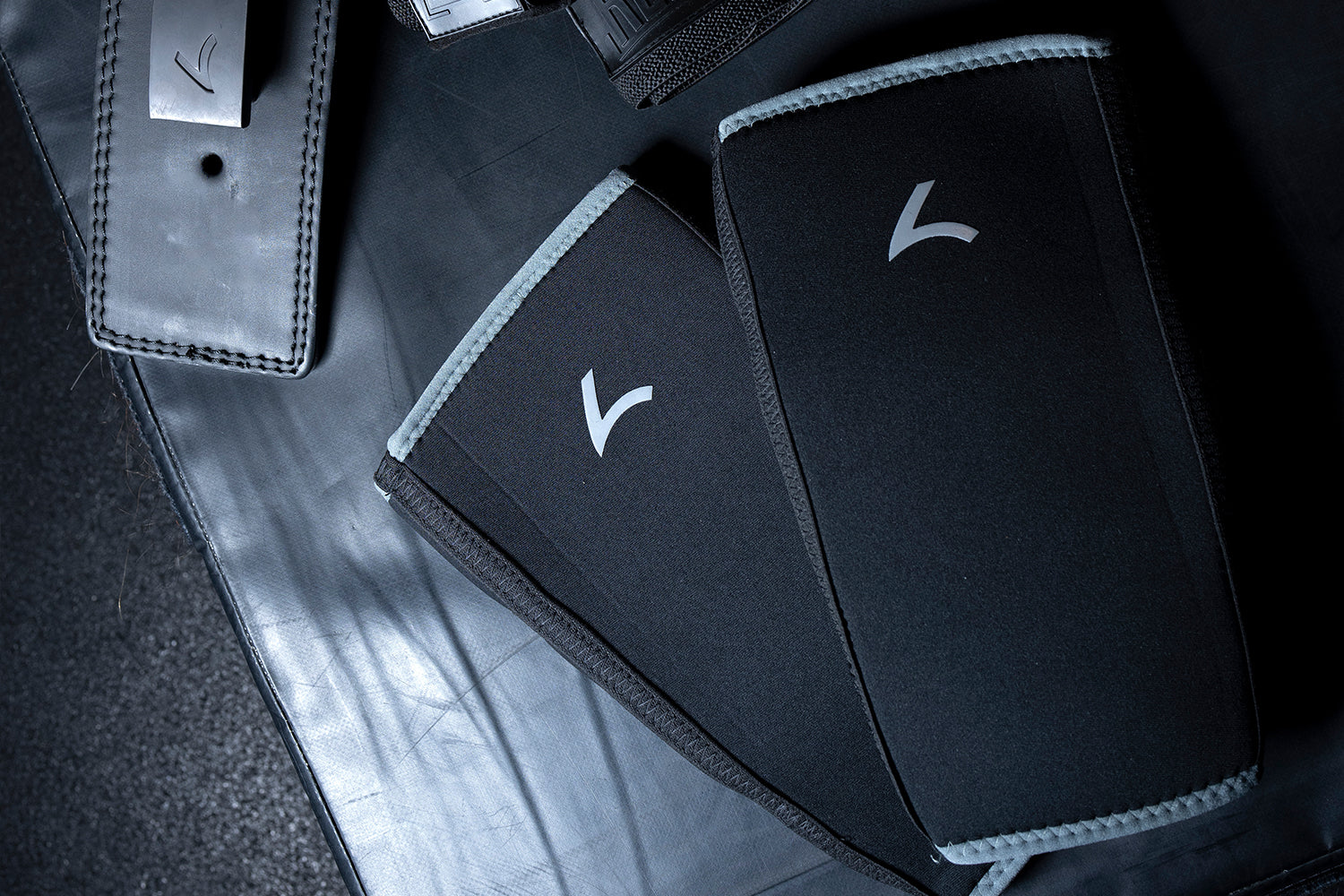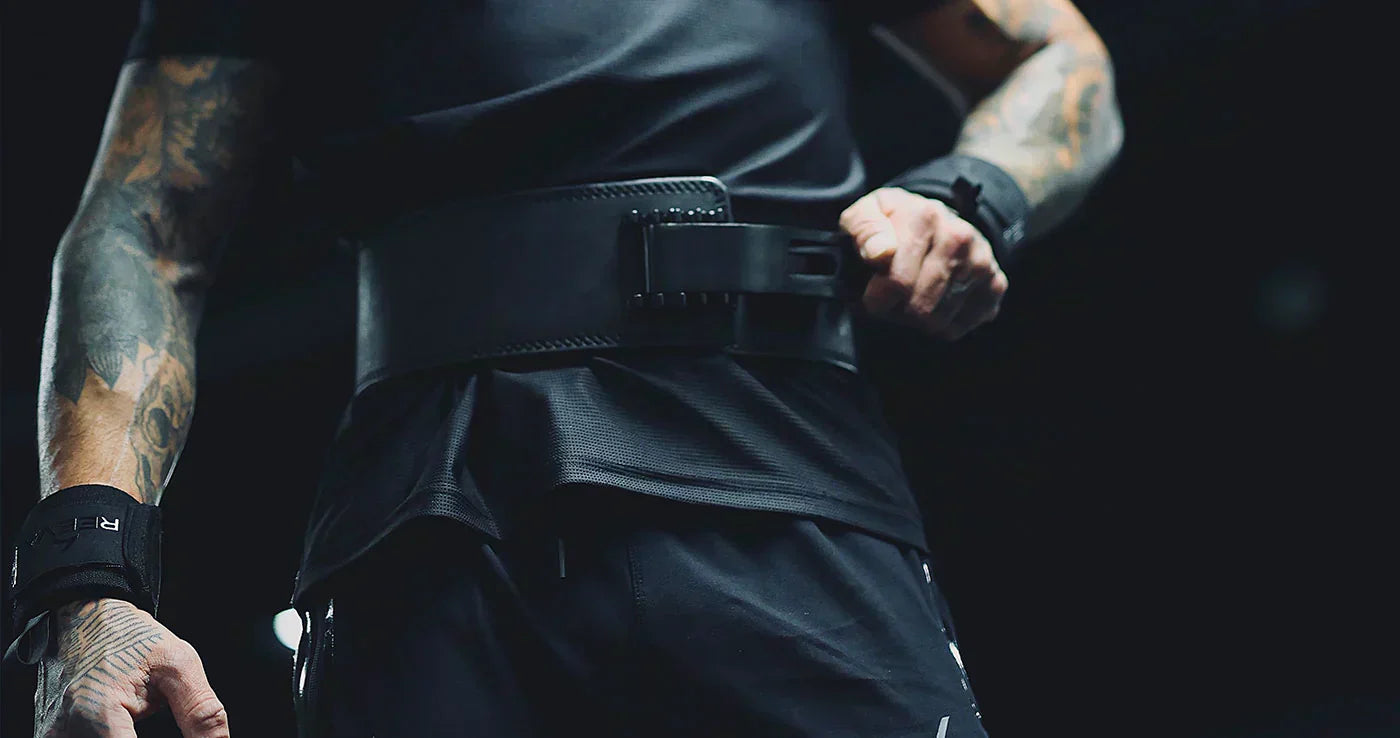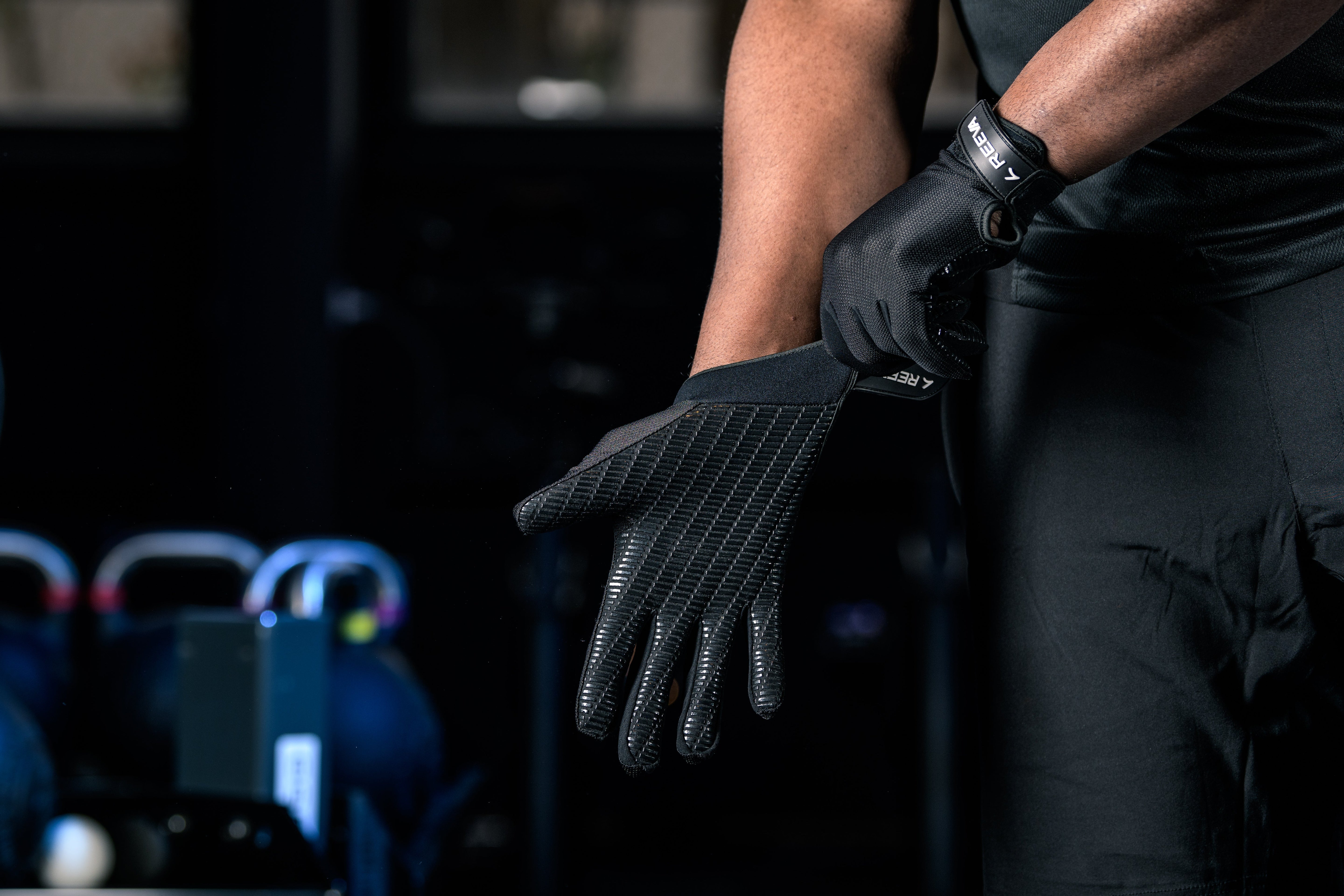Weightlifting gloves spark endless debate in the gym. Some lifters swear by them for heavy sets, while others insist on training bare-handed. In practice, gloves are designed to improve grip and comfort. By adding padded or rubberized palms, quality gloves let you focus on lifting without worrying the bar will slip from sweaty hands. In effect, gloves act like a second skin: they create a barrier that reduces friction and minimizes the formation of calluses. The result is a safer, more confident lift for many athletes.
Key features of weightlifting gloves
-
Improved Grip: Most gloves feature textured or padded palms (often silicone or Clarino leather) that amplify bar traction. This stronger grip helps keep heavy bars and dumbbells from slipping, especially during sweaty, high-rep sessions. For example, Reeva’s fitness gloves use a patented R-Grip™ pad that “provides a natural feel combined with excellent grip and protection”, aiming to maximize traction without completely muffling bar feel.
-
Hand Protection (Callus Prevention): Repeated lifts create rough spots and blisters. Gloves cushion the hands against constant friction, preventing painful calluses. Good gloves spread the pressure across a padded surface – Reeva’s design, for instance, uses high-density foam that “spreads pressure and slashes friction” to shield against blisters and calluses. Keeping skin intact means fewer torn hands or rest days lost to hand care.
-
Wrist Support: Many lifting gloves include wrap-around wrist straps. These straps stabilize the wrist in a neutral position, reducing strain during heavy presses and pulls. Reeva’s gloves feature an adjustable hook-and-loop strap so you can dial in just the right compression for extra stability without choking your wrist. This extra support can help maintain proper form and protect a weak or recovering wrist under load.
-
Enhanced Comfort and Hygiene: By covering the palm, gloves act as a barrier against sweat, germs, and rough metal. Quality gloves often use breathable, moisture-wicking materials. For example, Reeva’s gloves are made of Clarino leather with “air-permeable micro tunnels” for ventilation, helping to keep hands cool and dry. By absorbing sweat, gloves can keep the bar less slippery and protect skin from shared equipment bacteria. This can make training feel cleaner and more comfortable, especially in a busy gym.
-
Pressure Relief: The padding in gloves distributes the bar’s load over more surface area. Lifting gloves can help relieve the pressure that is placed on your hands during heavy lifts. In practical terms, that means you may handle heavier weight or longer sets with less soreness, because the force is cushioned instead of pounding a few small spots on your hands.

Cons of Weightlifting Gloves
Despite these benefits, weightlifting gloves come with trade-offs that concern many athletes. Any extra material between your hand and the bar naturally insulates you from the feel of the lift. Many experienced lifters note that thick padding can dull bar feedback, making it harder to refine grip technique. One coach candidly says the extra layer holds [him] back from mastering proper form, because you can’t truly grip with gloves.
-
Reduced Tactile Feedback: Gloves cushion the bar, which means you feel less of the metal knurling and rely more on the glove’s grip. This can hinder the development of raw hand and forearm strength. As Men’s Health observes, gloves may cause you to “lose a ton of natural grip training” and the ability to “truly feel what you’re gripping”. In other words, you might drop the bar more easily once the glove is removed.
-
Grip Dependency: Regularly using gloves can become a crutch. Over time, you may find yourself unable to lift as well without them. In addition, gloves can be “habit forming” – reliance on them could prevent your grip from strengthening naturally. To build unassisted grip, some lifters reserve gloves only for very heavy or high-volume sets.
-
Inconvenience and Durability: Gloves need care. You’ll likely take them on/off between sets, which can interrupt your flow. Cheaper gloves can also tear at finger holes or lose their grip over time, requiring frequent replacements. High-quality gloves (such as Reeva’s with Clarino leather) last longer, but expect some wear if you train intensely every day.

Are Gloves Worth It?
Whether lifting gloves are worth using ultimately depends on your goals and training style. Many beginners or high-volume lifters appreciate the extra comfort and protection, while others in competitive lifting prefer bare hands. Weightlifting gloves can enhance grip and prevent blisters, but any impact on technique is a matter of personal preference. For most athletes, the best approach is a mix: use gloves for tough, high-rep or max-effort sets when hand health is paramount, and train bare-handed at other times to keep your raw grip strong.
Modern glove designs aim to maximize benefits while minimizing drawbacks. For example, Reeva’s R-Grip fitness glove uses premium Clarino leather with ventilation tunnels and an internal silicone R-Grip pad. This combination is engineered to give a “natural feel combined with excellent grip and protection”. Reeva also strategically places foam padding to dissipate force and “spread pressure” under heavy lifts, which helps fend off blisters without completely insulating your hands. In short, a well-designed glove can let you lift harder and longer with fewer sore hands.
In conclusion, gloves can be worth it for many weightlifters – especially if hand soreness or wrist comfort is a concern. They clearly boost grip security and hand protection, and the best gloves (like Reeva’s) address common cons with features such as breathability and thin tactile pads. However, to fully develop grip strength, it’s wise not to rely on them 100% of the time. By understanding the pros and cons above and choosing high-quality gear, you can make an informed choice that keeps your training both effective and comfortable.





